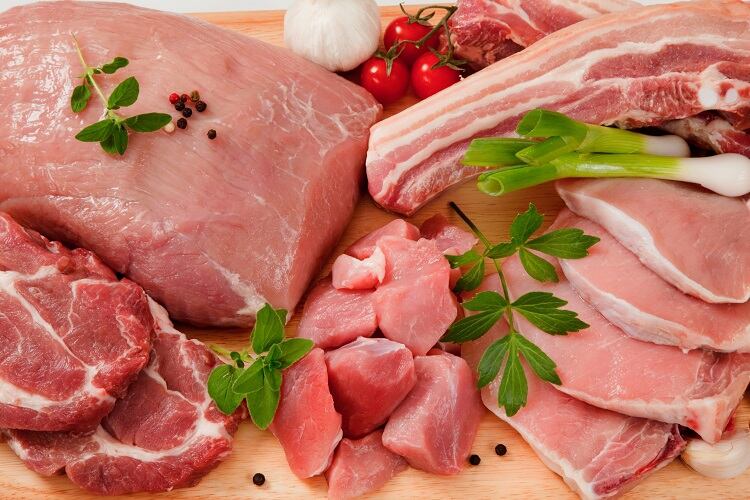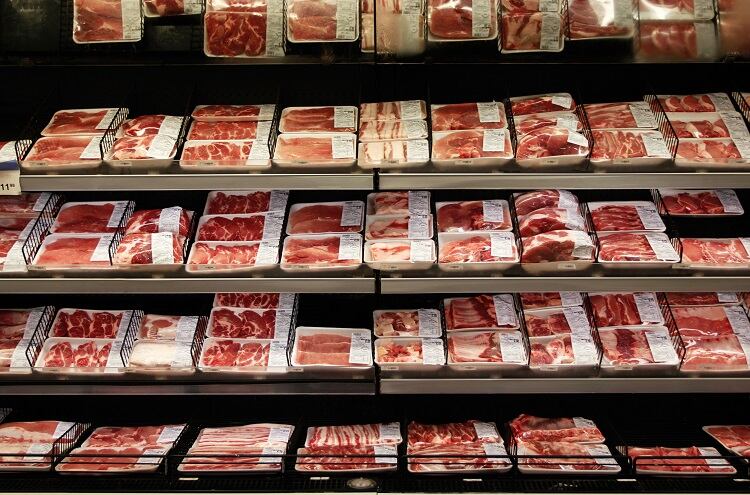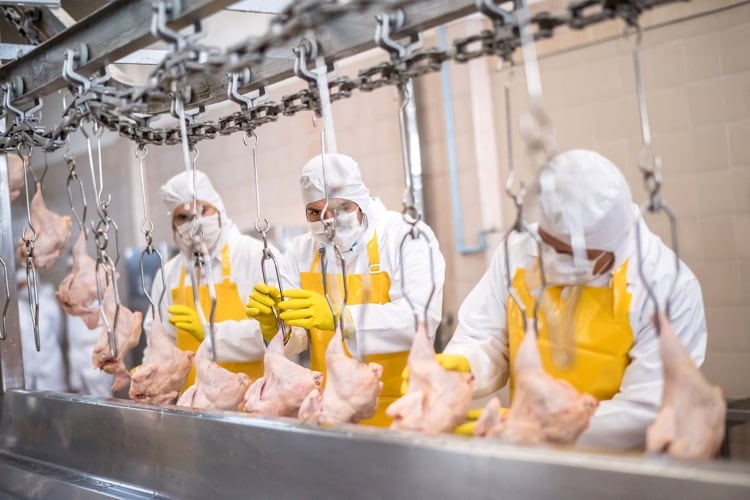As a major producer of wheat, sunflower, corn, soybeans and barley, Ukraine has been coined the ‘breadbasket of Europe’. The disruption of these global supply chains following Russia’s invasion of Ukraine on 24 February have been widely reported.
But what about meat? Ukraine produces pork, beef, and poultry, amongst other variants, and is ranked the eighth largest poultry exporter globally. So how is the conflict impacting this sector?
In March, consultancy and market research firm Gira addressed this question, suggesting the impact on Ukraine’s meat market will be ‘hugely negative’, from both consumption and export perspectives.
Pork: Production, consumption, and imports to drop ‘sharply’
In late 2021, Gira forecast Ukrainian poultry and pig meat consumption would maintain its upwards trajectory until at least 2026. Beef consumption was expected to slightly increase during this time.
“We were optimistic that Ukraine would continue to consume more meat and poultry going forward,” recalled Rupert Claxton, Gira Meat Director, during a webinar on 24 March.
The reality, it turns out, is that 2022 will see a dramatic drop in consumption. Gira’s findings are ‘speculative’, but Claxton is convinced: “Consumption will be heavily impacted.”
Not only will local consumers be unable to afford Ukraine’s meat products, but supply chain challenges are expected to disrupt production. Key issues include staffing, infrastructure, inputs, cash flow, market, and theft, he explained.

In the pork sector, production is expected to ‘stall and fall’. To start with, pigs will be killed early by both sides – Ukraine and Russia – to feed their respective armies, said Claxton. For Russian armies advancing in Ukraine, the temptation to ‘steal and plunder’ farms they come across is ‘very high’.
There will be little opportunity to restock supply, owing to a loss in cash flow, and due to the outbreak of African Swine Fever (ASF) in Ukraine, exporting pork is off the cards.
“This is really about the domestic supply situation. Pork consumption is around 22kg per capita and is expected to come down very sharply. It will take time to rebuild,” we were told.
Gira also expects imports to drop from both Europe and Russia. Prior to the Russian invasion, the European Union was a ‘major supplier’ of pork to Ukraine. Today, the EU will face challenges exporting pork into the country due to rising prices and transport disruptions.
“But it might be that we see some aid being shipped into the Ukraine from Europe in terms of meat.”
Poultry exports pivot to domestic market
Consumption of poultry meat in Ukraine is also expected to decrease. Production will ‘plummet’, said Claxton, due to several key factors.
Supply chain disruptions will have a negative impact on restocking, and energy will be a ‘major concern’. From freezers to incubators and generators, power cuts – which the Meat Director said are already being reported – are impacting operations. “I read a report about a potato facility where the potatoes were just rotting in warehouses because there was no power,” he recalled.
Slaughterhouses will be disrupted for much the same reasons: there is no labour, power, or products coming in.
On the plus side, local consumption will be supported by lost export value. “So the 500,000 tonnes that goes into the export market gets turned back onto the domestic market.”

Prior to Russia’s invasion, Ukraine enjoyed a healthy poultry export market. The country is the eighth largest exporter of poultry meat globally, accounting for 2.2% of global traded raw volume.
With Ukraine’s poultry export market now hindered, which countries are going to miss out? Gira’s analysis of poultry export destinations between 2010 and 2026 suggest the Middle-East and North African markets will be hit the hardest.
Sub-Saharan Africa is the next largest market for Ukraine. Europe had been a strong customer, but has since been limited by a quota of 70kt per year.
Claxton does not expect any poultry will be shipped abroad from Ukraine for the remainder of 2022. Instead, the Meat Director predicts Brazil to pick up the shortfall: “You’re going to see Brazilian chicken coming in…to pick up the gaps.”
Impacts on business
What are the repercussions for businesses operating within the Ukraine meat sector?
MHP, the Ukrainian Broiler Company, is the largest producer and exporter of chicken in Ukraine. The business specialises in poultry, as well as the cultivation of cereals, and other meat production activities.
In 2020, MHP produced approximately 700 kt of poultry. The company is responsible for 50% of Ukraine’s poultry production and 53% of its export volume, which given Claxton’s predictions for the country’s export market, is a concern.
In fact, it’s a concern for all companies built on a business structure that supplies to export markets.
“MHP is a significant agri-business, very well invested with a global reputation, trading with serious partners in Europe and the Middle East who are now facing this utter disruption to their business model.”

Other business implications further afield include a reduced workforce in Europe. It has been reported that approximately 70,000 Ukrainian nationals have returned home from the EU to either fight or care for their families.
At the same time, Europeans are under financial strain. Dealing with lower disposable incomes due to inflation, energy costs, and the COVID-19 crisis, it is expected consumers will ‘downtrade’ to cheaper meats and cuts.
And finally, Europe will experience ‘displacement of consumption’, said Claxton. “Ukrainian refugees are increasing consumption in other EU countries, mainly of ‘basic’ products – especially poultry,” he continued, urging businesses to rethink their product distribution.


